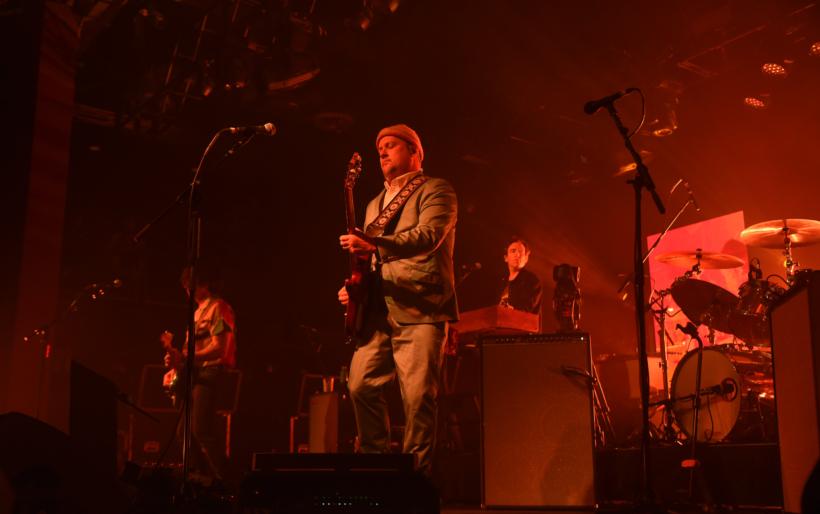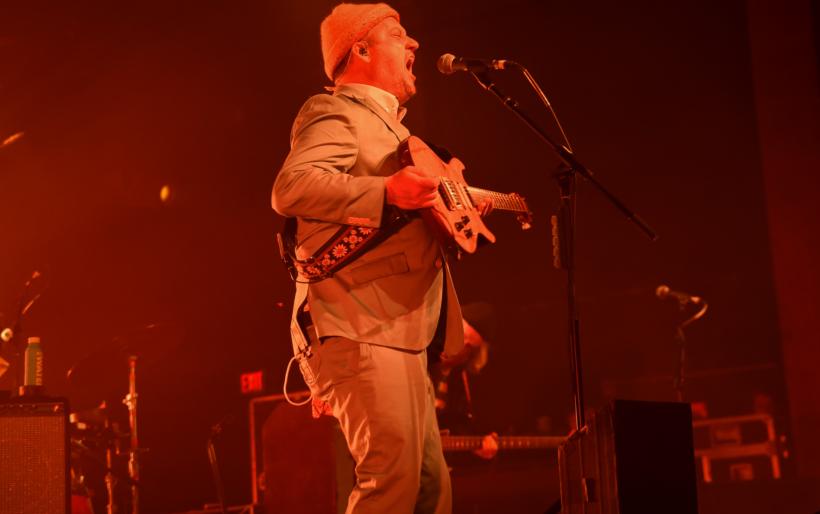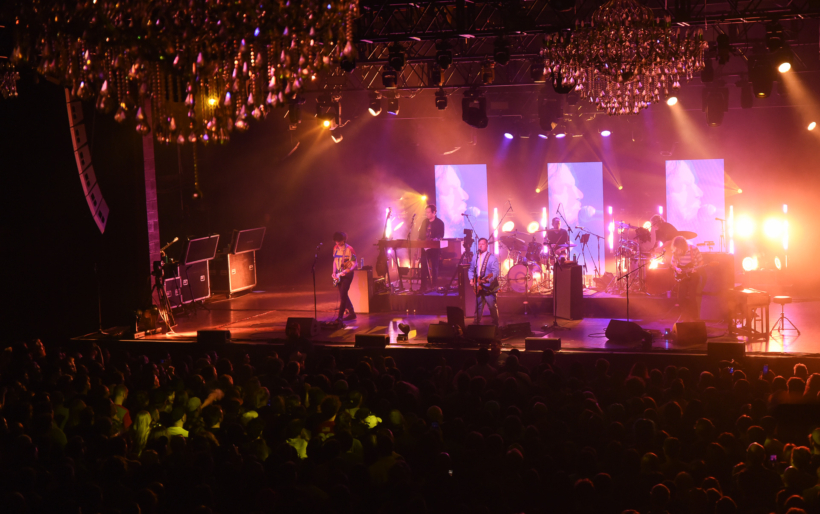There is an inherent push and pull at the center of the growing Anniversary Tour Industrial Complex and, I must admit, I’m not sure precisely where I land. It’s something I couldn’t help but mull over as I watched the throngs of excited fans funnel into The Fillmore Wednesday night for what was a sold out show featuring now legendary indie-rockers Modest Mouse set to play perhaps their most iconic album, Good News For People Who Love Bad News, in full. The skeptic in me wants to question the end-game of all this nostalgia. Where, precisely, does this cycle of cultural regurgitation land us when things are said and done, when crass commercialism has sucked the past dry? Especially when you consider the fact that this is actually the second go round for Modest Mouse after their tour celebrating the 25th anniversary of The Lonesome Crowded West back in 2022.
To be fair, it seems a question the band’s famed surly frontman, Issac Brock, might growl into the mic between diatribes on strip malls and blissful misanthropy. And yet, despite all this, it was about a third of the way through Modest Mouse’s Wednesday night set that the earnest, sentimental 15-year-old me that first heard Good News For People Who Love Bad News came over and kicked this old cynic in the shins, dispelling all his hand-wringing and reminding him of what made him fall in love with the Modest Mouse in the first place.

Modest Mouse | photo by Megan Matuzak for WXPN
In a way, Good News is itself representative of Modest Mouse’s interesting place in the cultural imagination. Now seven albums in, this record marks the definitive mid-point in the Issaquah, Washington band’s discography and represents the moment they went from scuzzy indie-rock weirdos to genuine alt-rock radio darlings. The idea that the band who wrote “Doin’ The Cockroach” would, only a few years later, lose a Grammy for best song to U2 remains sort of baffling. “Float On”, and the album as a whole, guaranteed that Modest Mouse would remain indie/alt-rock mainstays whether they cared or not.
It was a bit surprising, then, to be reminded of just how strange and discursive their breakout album truly is. I made a point of avoiding a re-listen ahead of Wednesday night’s show, a move I hoped would help me hear the album in a new way. In many ways, this worked like a charm, especially because – as is often the case in these anniversary shows – Brock and company played the record front to back in its original sequencing. Sure, the band predictably ripped through through the front-loaded, time-test hits of the album’s first side – the incredible trio of “The World at Large”, “Float On”, and “Ocean Breathes Salty” – but it was as they entered the middle section they truly hit their stride.
The pure chaos of the run from the intro “Dig Your Grave” to “Dance Hall” and all the way through to “This Devil’s Workday” is something that get lost in all the accolades and radio singles and puts into focus just how weird it was that these guys – these barking, frenzied, filthy pseudo-prog rockers – were once pegged as alt-rock’s next big thing. For their part, this seemed to be the section of the show that inspired Brock and company to fully let loose. At point, Brock even stopped to acknowledge the oddity of playing these songs, in this context, at all. “The mind plays tricks, man.”

Modest Mouse | photo by Megan Matuzak for WXPN
Upon the conclusion of album-ender “The Good Times Are Killing Me,” Modest Mouse left the stage for what would ultimately be one of two short intermissions. When they returned they were equipped with a short second set that blended the familiar with some of the deeper cuts you are likely to ever see the band play. This meant a big chunk of their 2009 EP No One’s First, And You’re Next, including songs like “Satellite Skin,” “Guilty Cocker Spaniels,” and “King Rat,” all of which left the audience a bit split; the real heads in absolute bliss while the majority left a little perplexed. Thankfully, they knew to pepper in some of their most enduring songs from another legacy album, The Moon & Antarctica, ending barn-burner with “Paper Thin Walls.”
It was, ultimately, the perfect cap to an evening that left few, if any disappointed. My own cynicism fully dissolved, I was able to look at the mass of fans exiting The Fillmore in a different light. I was 11 years old when Good News For People Who Love Bad News was first released and, by rudimentary observation, many of my fellow concertgoers were likely right around the same age. The anniversary tour fad may not live forever, but if it gives the chance for people to see the songs that they grew up with played by a band who grew up along with them, they are alright in my book.
